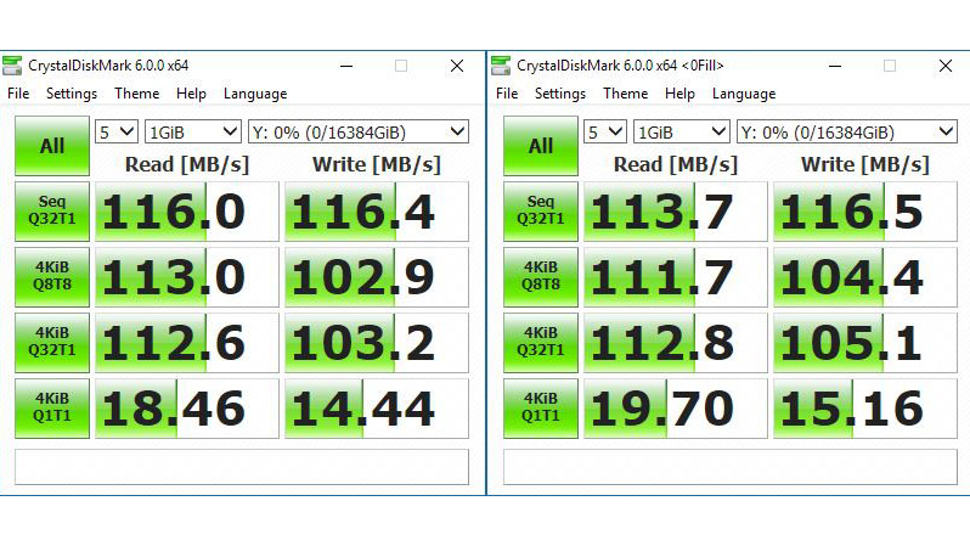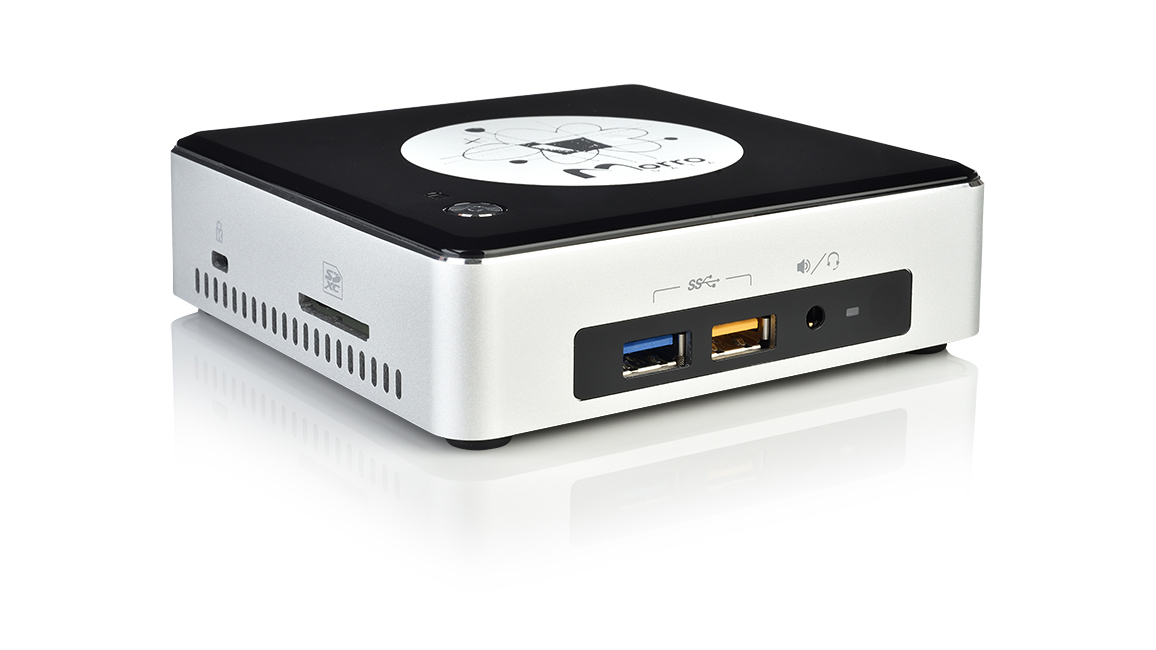Why you can trust TechRadar
Performance
The speed of the G80 is much what you might expect from a Core i3 processor, 4GB of RAM and a 1TB SATA drive connected via gigabyte Ethernet. Using CrystalDisk 6, the network attached G80 hit 116MB/s both reading and writing, running into the effective brick wall of gigabit Ethernet bandwidth.
In theory, you could make it faster if the G80 had two Ethernet ports, or 10GbE, but for a smallish team of users, it is plenty quick enough.

For those that want more performance and users, Morro Data has options. What those numbers don’t tell you is how rapidly that data progressed out to the Cloud, but that will be entirely dependent on broadband connection and contention. If you dumped the full sized of the cache, 1TB on there, it would take a while. But then it would also take more roughly three hours to copy it there in the first place.
That’s not how this system is intended to be used, although you might need to schedule that type of exercise to initiate it.

Pricing and overheads
Using the Morro Data Cloud Cache solution costs more than just the Intel NUC device, and understanding the full cost is important in justifying the ongoing expenditure.
After the flat cost of the hardware, you have a monthly or yearly subscription that’s dependent on exactly how much Cloud data you are looking to use with it, and if you have multiple sites and devices.
The cheapest option is CloudNAS Essentials that uses Wasabi Hot Cloud Storage and provides 1TB of Cloud capacity for $69 (£50) per month. You can sync up to five sites for $89 (£65) per month on CloudNAS Business for the same capacity, or pay more for greater storage.
Upgrading this to CloudNAS Enterprise will enable 500 sites and five devices for $995 (£720) per month, and you can add extra devices for $199 (£145) each.
On the two top levels Morro Data offers Amazon S3 storage in addition to the Wasabi option. Each Terabyte costs $19 (£14) per month on Wasabi or $39 (£28) on S3, and there is also an additional download cost per GB for using AWS.
You can bring your own storage if you already use Backblaze B2 or AWS S3 Regions, and you are charged a flat rate of $15 (£11) per TB per month for the privilege. There is also support for Microsoft Azure AD and local AD.
Those are the potential outgoings, but it should also be factored that it should deliver major cost savings in eliminating user delays and securing live data seamlessly.
Having Cloud secured files ticks one box for a disaster recovery plan, as does having file versioning, and the ability to reduce the time to access Cloud data is also a big plus.
But the best aspect of all this is that while it would be possible to create similar effects with off-the-shelf tools and planning, the G80 and its sibling devices are all meant to deliver exactly this solution, and aren’t just software tools repurposed for the job. It’s the subtle features of the Morro Data solution, like the controlled distribution of files and cache management that make it superior to other Cloud server sync tools and methods.
For those wishing to dip their toes into the Morro Data experience, the cheaper G40 ($499, around £360) is available, a lower spec Intel NUC that uses a Celeron CPU and a physical hard drive.

Final verdict
The Morro CacheDrive G80 is an innovative product that fixes many of the issues relating to integrating Cloud storage and local servers effectively.
The G80 is ideal for a business that has a small number of locations with 50 or fewer users at each site. And for bigger operations, it can be scaled up, with 500+ users using VMware or Hyper-V on more powerful hardware.
- These are the best NAS devices
Mark is an expert on 3D printers, drones and phones. He also covers storage, including SSDs, NAS drives and portable hard drives. He started writing in 1986 and has contributed to MicroMart, PC Format, 3D World, among others.

